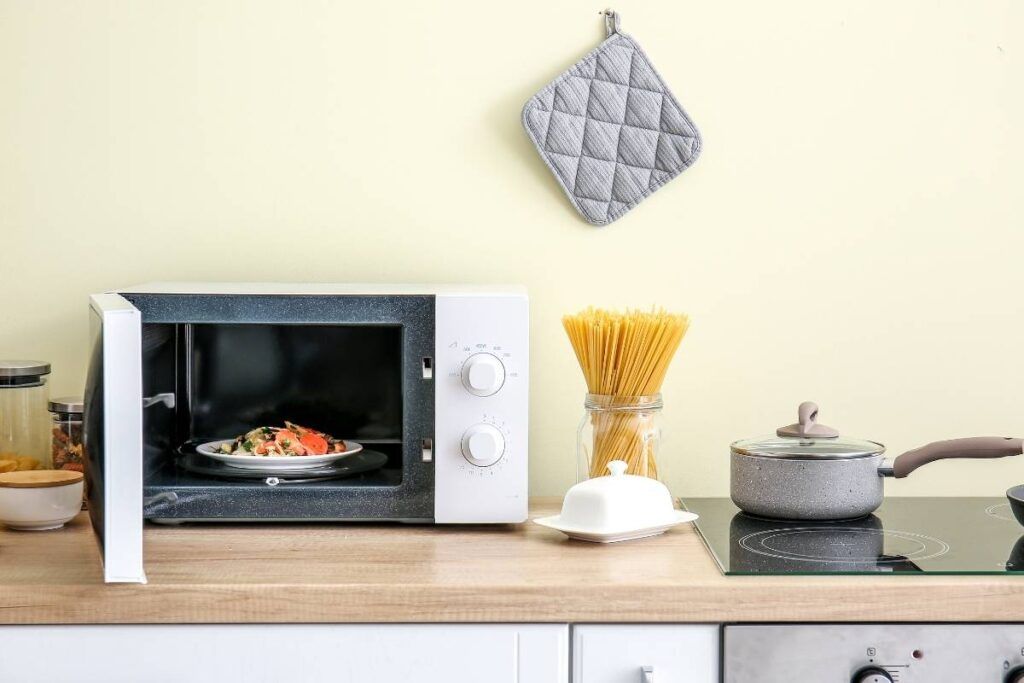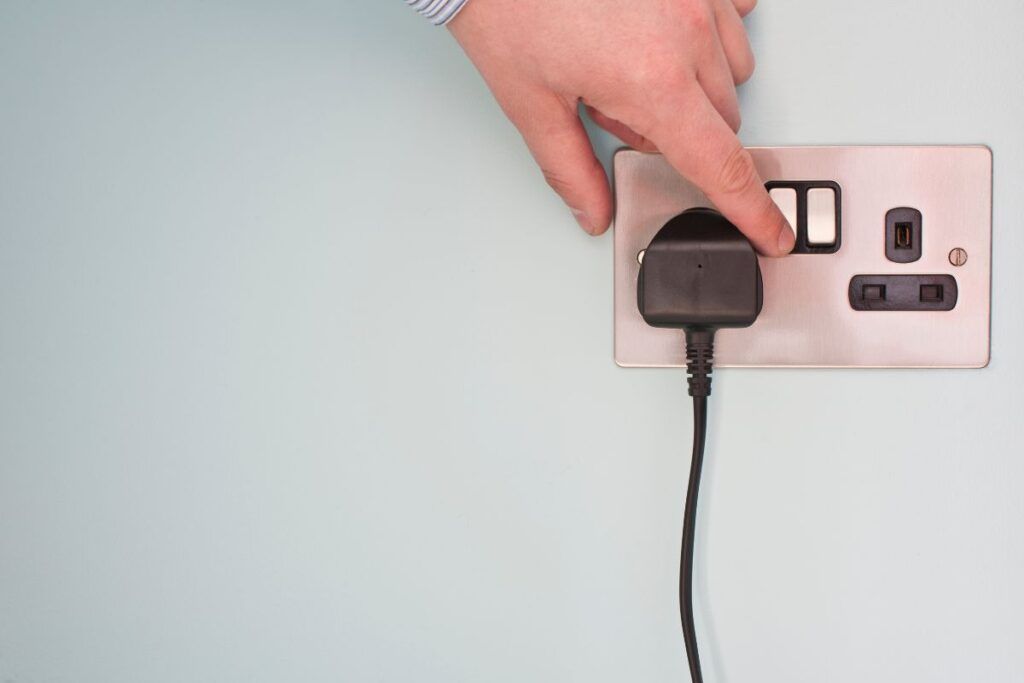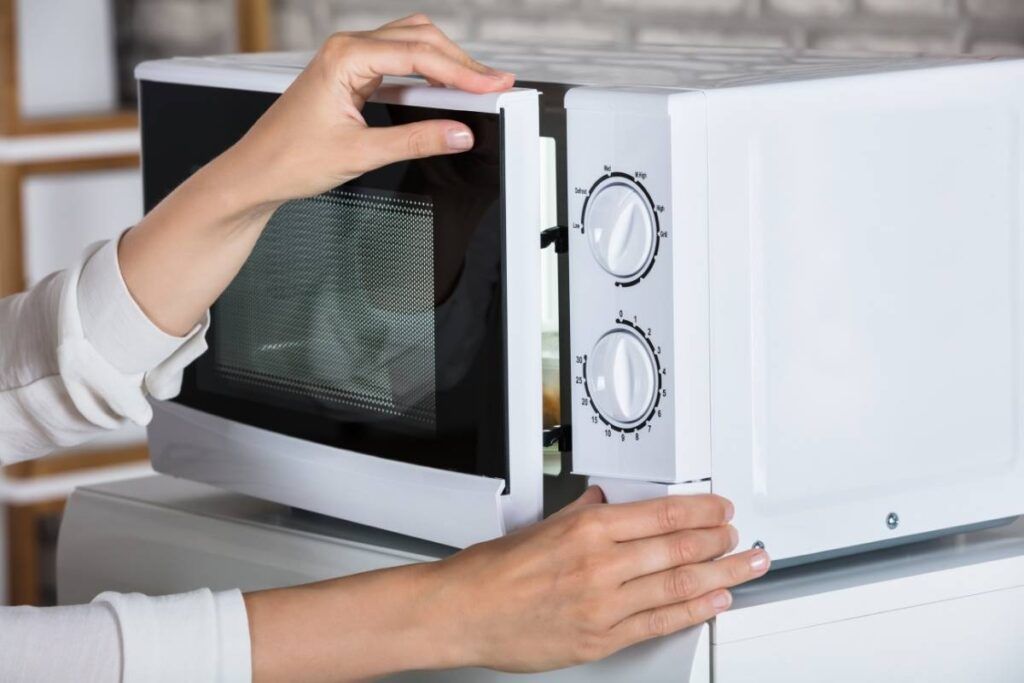A microwave, not heating, can be very frustrating. Your microwave might not heat due to some simple issues or severe problems. You are at the right place if you have an LG microwave and want to know why it’s not heating.
Your LG microwave might not turn on if you haven’t closed the door properly. Check the door and make sure it’s closed right. The next step is to check the fuse and ensure it’s not blown. A faulty diode can also prevent the microwave from heating. If so, call a professional to fix the same.
Other errors and problems can also cause your LG microwave not to heat. I will discuss all the possible issues in this article and give you the fix. So, keep reading.

Check out our list of top-handpicked products for all your electrical, appliance, and HVAC system needs to keep your home running smoothly.
This post includes some affiliate links.Why is my LG microwave not heating?
In my years of dealing with appliances, dealing with microwave issues is the toughest as, in most cases, you will need to seek professional help.
A microwave uses large voltages of electricity, and any wrong step can be lethal.
But there are a few ways to know what is wrong with your microwave, and I will help you with that.
Here are 10 common reasons why your LG microwave doesn’t heat:
1. Faulty outlet
We often overlook this, but sometimes, the issue might not be with your microwave altogether.
The electric outlet might be at fault.
You can check this by unplugging the microwave from its current outlet and plugging it into another one.
Place a glass of water inside the microwave, turn it on, and check if it is heating.
After turning the microwave off, if you find that the water is hot, you know that the microwave is working fine and the outlet is at fault.
But, if the microwave still doesn’t heat, continue reading.

2. Function errors
Another common reason that prevents your LG microwave from heating is the errors with the codes you see on display.
Each error code signifies different errors.
Let’s take a look at them:
| Error code | Indication |
|---|---|
| Door | The door is open. Check if something is not letting the door close properly. |
| F1 | Thermistor sensing error or no heat. |
| F2 | No heat even after 10 seconds. |
| F3 | The thermistor temperature doesn’t reduce even after the cooking/heating ends. |
| F4 | Error in the humidity sensor. |
| F5 | Error in the damper switch. |
The best way to fix most of these is to reset your microwave.
How do I reset my LG microwave?
Here are the steps to reset your LG microwave:
- Turn the microwave off and unplug it from the electric outlet.
- Leave it like that for 15 seconds.
- Plug the appliance in and turn it on.
- Place a mug with water and turn the cooking on for 30 minutes.
Check if the water heats.
If not, you should consider all the points I’ve mentioned later.
3. Faulty door switch

An LG microwave usually comes with 3-4 door switches, and these door switches help the door close properly.
These switches also signal the appliance that it is safe to start heating.
If one or more of these are at fault, the microwave will not heat.
To know if this is the case, follow these steps:
- Get a multimeter.
- Open the microwave door, test each door switch with the multimeter, and check if they have continuity. Close the door, and while you do so, the multimeter should make a beep sound. If it doesn’t beep for any of the switches, you must replace them.
- Replace the ones that don’t have continuity.
- Discharge the capacitor for 15 minutes.
- Now use a screwdriver to unscrew the microwave top.
- Remove the grill to access the control panel.
- Unscrew the two screws of the control panel and remove the panel.
- Remove the switch assembly by unscrewing and pulling it up without damaging the wires.
- Push the release tab to pop the door switches out.
- You can get new door switches on Amazon based on your LG microwave model and plug them into the wire connector.
- Reinstall all the parts and test the microwave to know if it is heating.
4. Faulty diode
A diode is an important part of the microwave that Alternating Current power to Direct current power.
It doubles the voltage to almost 5,000!
If the diode of your LG microwave has burned out, the machine won’t have enough voltage to heat.
You need to check the diode and decide if this is the case.
One easy way to know that your diode is at fault is that you will get an electrical burning smell.
You might also notice cracks or blisters on the diode.
The location of the diode will depend on the microwave model.
I do not suggest working on this yourself as the diode contains large voltages of electricity even when you turn the microwave off or unplug it.
It is best to consult a licensed professional to handle this.
But here are the steps for replacing a faulty diode to give you a basic idea:
- Unplug the microwave from the electric outlet.
- Take out the glass tray and the glide roller and keep them aside.
- Unscrew the screws using a screwdriver to remove the venting.
- After that, unscrew the screws that secure the control panel.
- Lift it and separate it from the microwave.
- You will then notice the access panel, which you must remove.
- And then, you will be able to access the diode.
- You can test it with a multimeter.
- Discharge the capacitor’s stored electrical charge to avoid the chances of hazards.
- Detach the old diode and install the new one by attaching the ends properly and securing it with screws.
- Reinstall all the parts you had dismounted one by one and keep securing them with screws.
- Plug the microwave back into the electric outlet.
Test the microwave and check if it is working.
5. Faulty magnetron

A faulty magnetron is often why your LG microwave might not heat.
It is responsible for using high-voltage DC to heat the food.
If the magnetron burns, you will need to replace it or get a new appliance.
The cost of replacing the magnetron can range between $100-250.
Here is how you can check if the magnetron is at fault:
- Unplug the microwave from the electric outlet.
- Ensure that the high-voltage capacitor is fully discharged before proceeding with the next steps.
- Remove all the microwave parts, as I mentioned in the previous point.
- You will have access to the magnetron, a large square unit made of metal.
- Unplug the wires from the magnetron.
- Set your multimeter to the highest ohm.
- Take the multimeter probes and touch one to the magnetron housing and the other to the magnetron terminal.
- Check the reading. The magnetron is not at fault if it is less than 1 ohm. But if the reading is greater than 1 ohm, you must replace it.
It is best to seek professional help to get this done.
Since replacing the magnetron is so expensive, many suggest getting a new microwave.
6. Faulty High-voltage capacitor
This part of the microwave converts A/C current to D/C current and doubles the voltage of the magnetron.
So, if this is at fault, the magnetron will not have enough power to heat.
If the high-voltage capacitor of your microwave fails, the entire circuit will fail to function.
The capacitor is near the magnetron, so you must access it using the same steps I mentioned earlier.
- Don’t forget to unplug the microwave and discharge the capacitor fully.
- The capacitor is located at different places for different models so look up the user manual or guide to understand where it is located.
- Once you have access to the capacitor, get a VOM meter and touch the heads to the terminal of the capacitor. Use insulated metal pliers to do this.
- Check the reading, and if you find that the capacitor is at fault, you must replace it.
- Use a flat-tipped screwdriver to unscrew the terminal screws or use needle-nose pliers if the terminal screws lie behind plastic tubing.
- Make sure to wear proper gloves, so you are protected.
- Wait for 5 seconds before removing the capacitor.
- Replace the old capacitor with a new one and reassemble the microwave.
7. Faulty high-voltage transformer

The high-voltage transformer sends power to the magnetron.
If the transformer is at fault, it will produce a burning smell, and you might also notice sparks.
If you continue using the microwave even after this, there can be hazards.
However, the microwave wouldn’t heat at this point.
Here’s how you check and replace the transformer:
- Unplug the microwave from the outlet.
- Unassemble the microwave using the steps I mentioned earlier in this article.
- Get a voltmeter and touch each head to the terminals using insulated pliers.
- If the reading comes between 50-70 Ω, then the transformer is fine, but if not, you will need to replace it.
- Use a screwdriver to unscrew the mounting screws that secure the grill.
- Now open the microwave door, slide, and lift the grill to remove it.
- Remove the glass tray and glide rollers.
- Allow the appliance to rest on its back while you unscrew the bottom panel.
- After removing the bottom panel, take the microwave back to its normal position and unscrew the cabinet.
- After this, release the stored electricity using needle-nose pliers to touch both terminals at the same time.
- Disconnect the six transformer wires and remove the screws.
- Remove the old transformer and replace it with the new one.
- Place the new transformer on the base and mount the screws to secure it.
- Reassemble the microwave parts and plug the microwave back.
Test it and check if it functions and heats.
Also read: Can You Run A Microwave With A Generator?
8. Faulty Thermo protector

The Thermo protector is responsible for cutting off the power supply if the microwave overheats.
A tripped Thermo protector can prevent your microwave from heating.
You can confirm if this is at fault by checking the fuses that would appear dark and scorched.
- Switch off and unplug your LG microwave.
- Use a screwdriver to remove the screws of the front vent.
- Now, remove the screws that secure the grill, slide, and remove it.
- You will notice a small cylindrical instrument with metal terminals. This is the thermal fuse or protector.
- Use your multimeter and switch it to the ohm setting before testing the Thermo protector. If the reading is infinite, you will need to replace it.
- Remove the old one and replace it with the new fuse.
- Reassemble the parts that you had removed.
Plug the microwave and turn it on to see if it heats right.
9. The child lock is active
The microwave will not heat despite having an electric supply when the child lock is active.
If you don’t know, the Child lock feature is designed to protect your appliances from your children.
When the Child lock feature is on, the control panel will not work.
So, you must deactivate this to make the microwave heat up.
- If the Child lock is on, you will notice a lock icon or ‘L’ on display.
- Press the ‘START’ button for 4 seconds.
- You should see the icon or the letter ‘L’ disappear from the display.
Try using the microwave after this, and it should heat.
10. Defective Main control board

This rarely happens, so come to this one after you have checked everything else is working fine.
If the control board doesn’t work, you will not be able to operate the microwave, and therefore, it will not heat.
- Unplug the microwave.
- Use a screwdriver to unscrew the 2 screws above the grill to remove it.
- You will notice a screw on the right side above the control panel. Unscrew it to remove the control panel.
- Unplug all the wires and connections and replace the old control panel with the new one.
- You can then reattach all the connections and assemble all the microwave parts.
Final words
Your LG microwave might not be heating due to the above reasons I explained. Make sure that you carefully go through each to find the exact problem.
However, since the microwave deals with high voltages of electricity, make sure you follow all the necessary precautions, like wearing gloves and letting the microwave discharge before handling its parts.
And if you feel unsure at any step, consider consulting licensed experts to avoid the chances of hazards.
Reference: LG Official Microwave manual, LG Error Codes Official guide, LG Microwave Reset.


